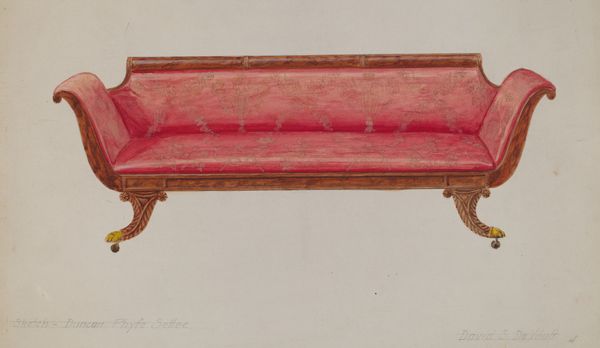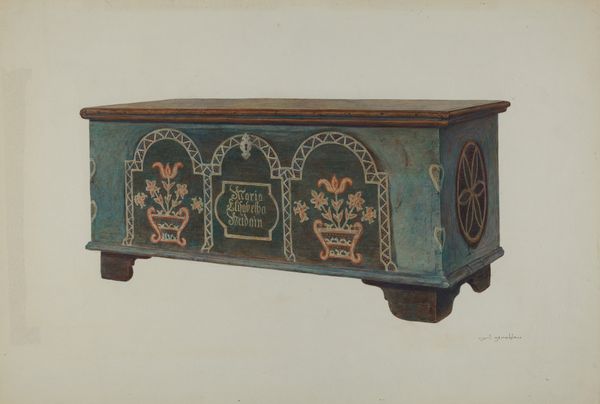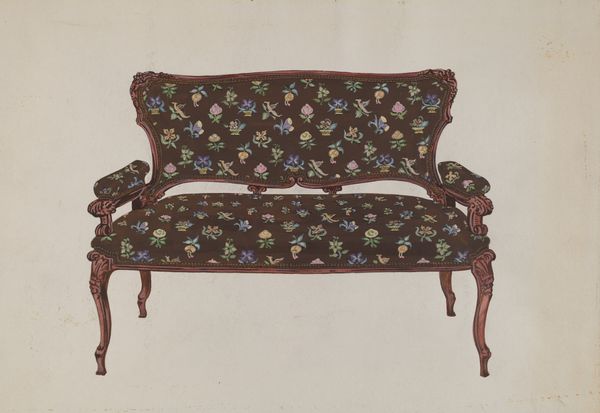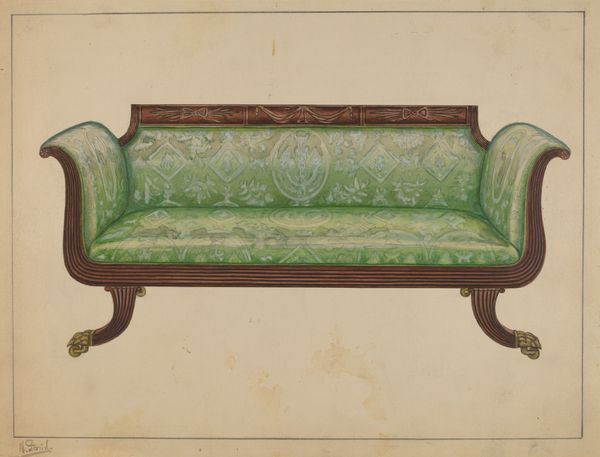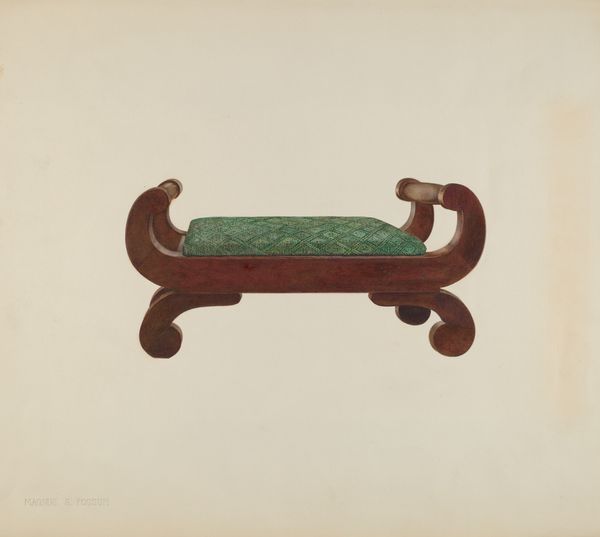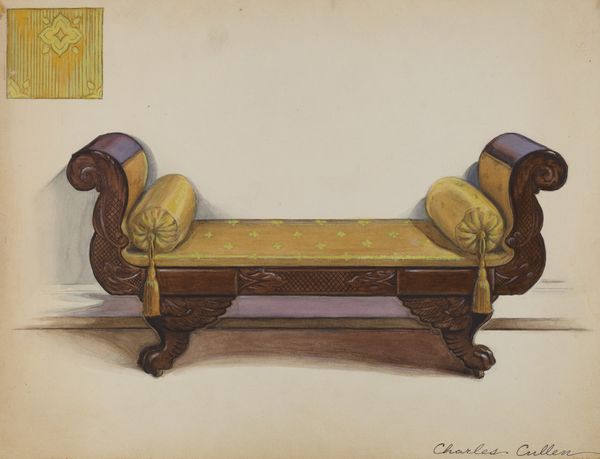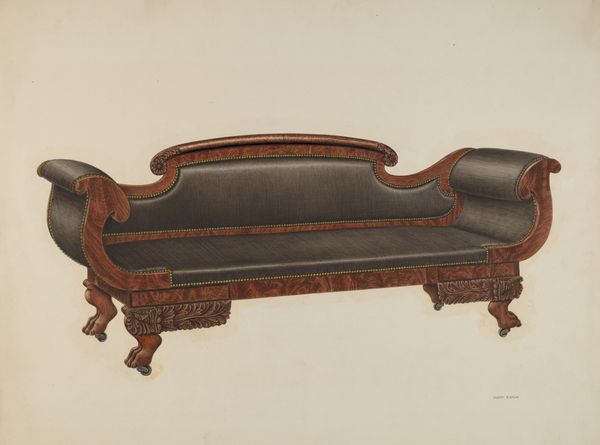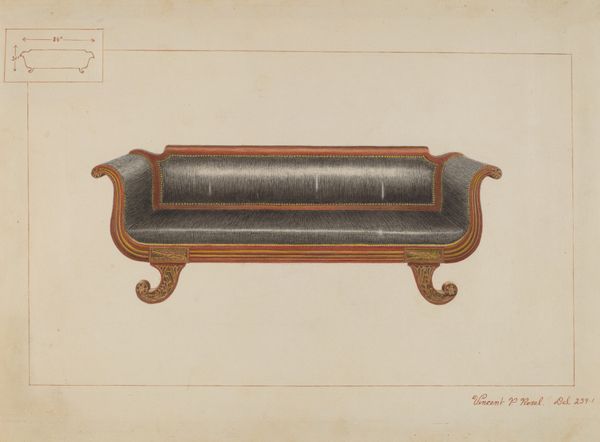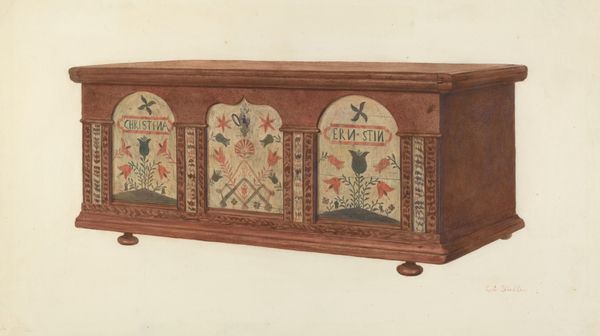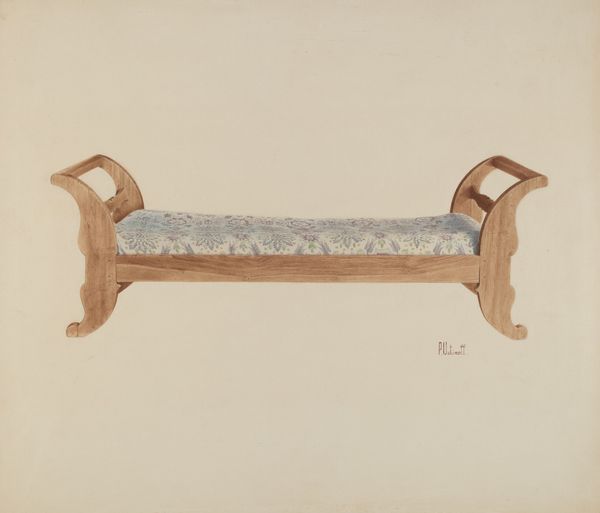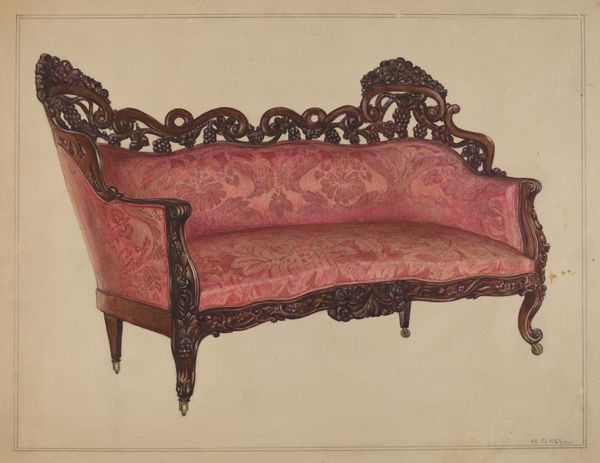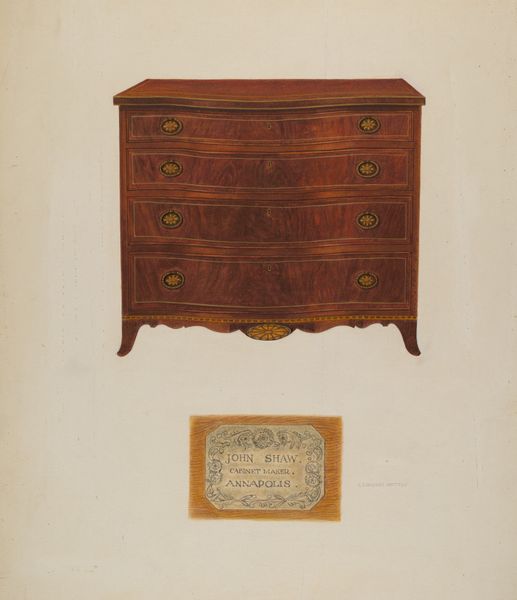
drawing, watercolor
#
drawing
#
water colours
#
watercolor
#
intimism
Dimensions: overall: 26.9 x 35.4 cm (10 9/16 x 13 15/16 in.) Original IAD Object: 35"high; 84"long; 25"deep
Copyright: National Gallery of Art: CC0 1.0
Editor: This is "High Back Lounge," a watercolor drawing by Magnus S. Fossum, dating from around 1938. There's a really cozy, almost domestic feel to it. How do you interpret this work? Curator: The intimacy you feel is intriguing, especially when considering its potential social context. This drawing, likely a design proposal, emerges from a period marked by anxieties around domesticity and gender roles. How might this meticulously rendered furniture, with its high back offering both comfort and confinement, reflect the prescribed spaces for women in the home during that time? Editor: That's a great point. I hadn't thought about the restrictive aspect of "comfort." The floral pattern on the upholstery seems almost… suppressed. Curator: Exactly! Consider the symbolism often attached to floral motifs. Does the restrained use of these typically vibrant patterns challenge or reinforce traditional expectations of femininity? Is this a subversion, an embracing, or merely a reflection of the dominant ideology? How do these considerations impact your initial impression? Editor: It's completely changing my perspective. At first glance, it seemed purely aesthetic, but now I see layers of social commentary embedded in its design. So, would you say Fossum was making a deliberate statement about women's roles? Curator: It's hard to say definitively without more context about the artist's intentions. However, by analyzing the artwork through a lens of gender and social expectations, we can begin to unpack the complex relationships between design, power, and identity in the late 1930s. Perhaps Fossum, consciously or unconsciously, was capturing a societal tension through the very objects meant to offer comfort. Editor: I never expected a sofa design to be so politically charged. Thanks so much for making me think differently about it. Curator: The beauty of art lies in its ability to hold a mirror to society, even through something as seemingly mundane as furniture. By asking critical questions, we empower ourselves to see beyond the surface and engage with the deeper currents of history and culture.
Comments
No comments
Be the first to comment and join the conversation on the ultimate creative platform.
